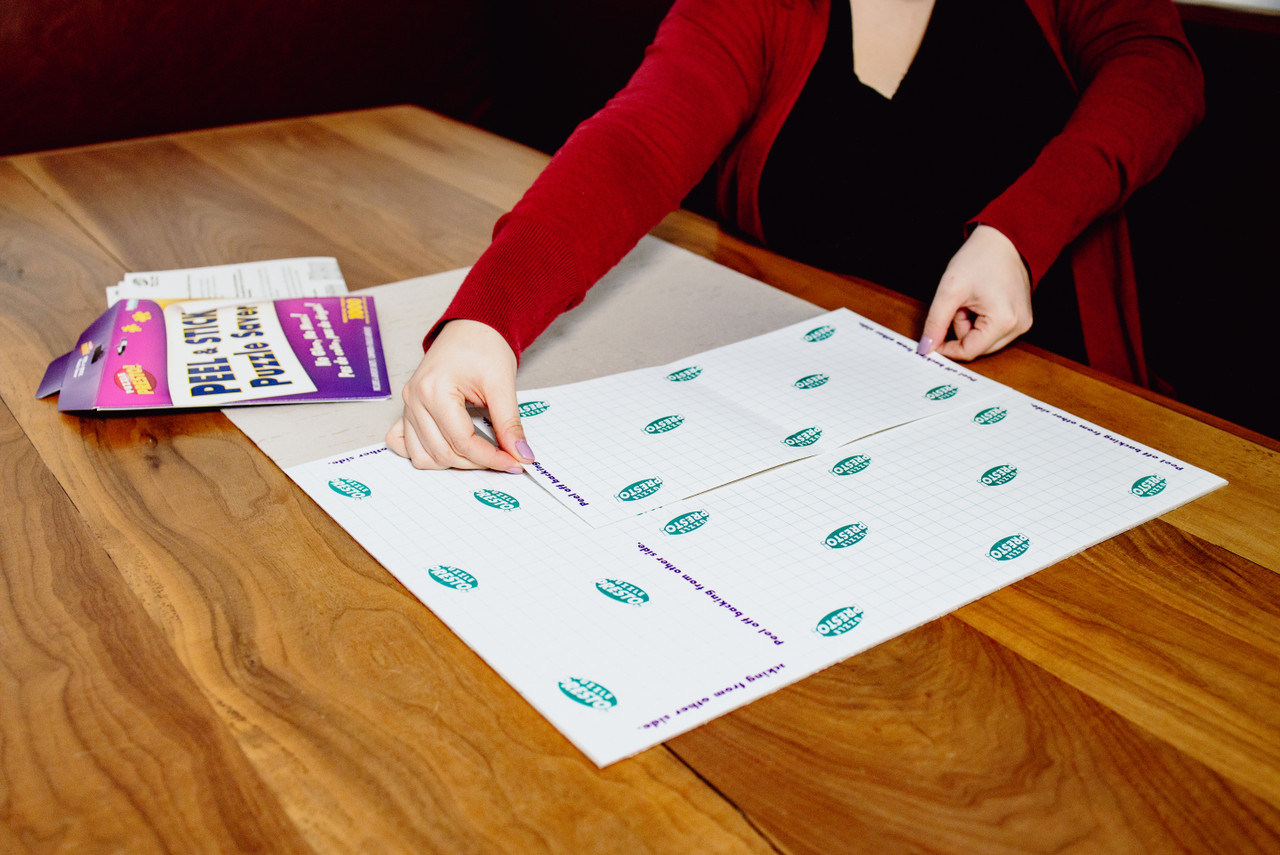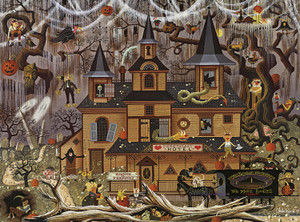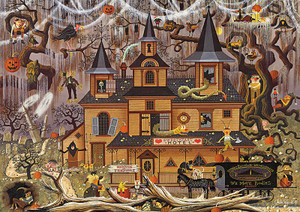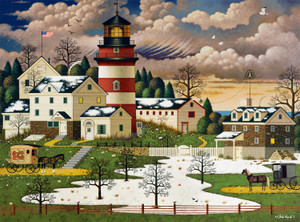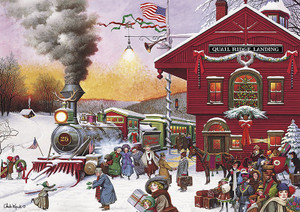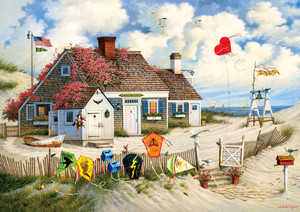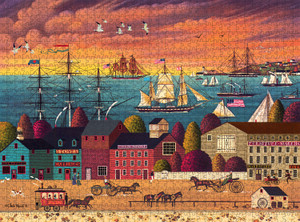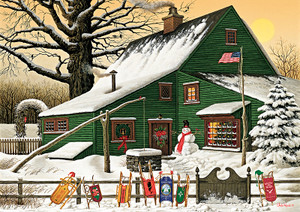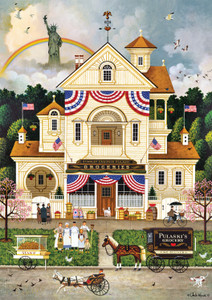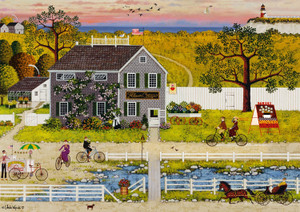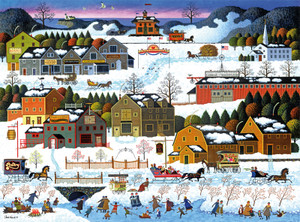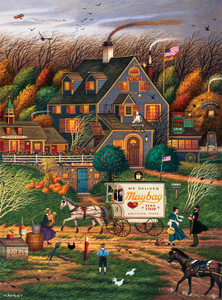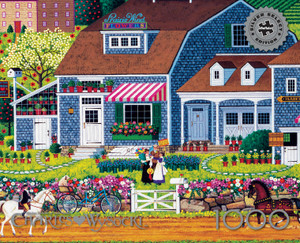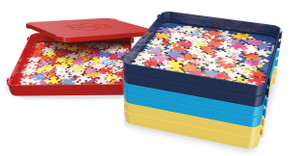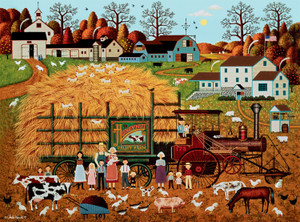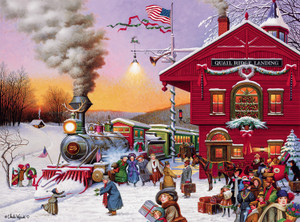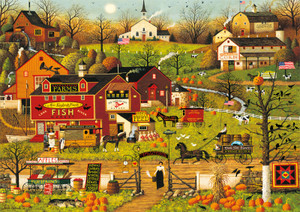Posted by Buffalo Games on May 24th 2022
A Puzzling Array of Accessories
Believe it or not, jigsaw puzzles aren’t standalone items. There are a lot of helpful little doodads out there, no doubt invented by your fellow thoughtful puzzle solvers, designed and intended to make the experience easier, more organized, or more convenient.
After all, who wants to work around one of those 1000-piece jigsaw puzzles for a week if it’s just hanging around on the kitchen table waiting to be solved? There must be a better way.
Puzzle Rolls
The words “jigsaw puzzles” and “portable” have always seemed to be mutually exclusive. That is until this handy little invention arrived.
A puzzle roll is a piece of thick black cloth, usually about three feet by four feet or so when fully unfurled, that comes with a plastic tube. The cloth is perfectly sized to be rolled around the tube, rather like rolling dough around a rolling pin.
The idea is that you build the puzzle on the unfurled cloth, and when you need a break, you simply roll it up as it is, finished or not, and the friction between the cloth and the puzzle pieces keeps your place for next time.
The fact that the plastic tube is usually about four or five inches in diameter makes for a stress-free relationship between your puzzle pieces and the roller.
Some variations on this theme don’t have a tube and aren’t made of cloth. Instead, they’re made of silicone plastic that’s about 3/16 of an inch thick. It’s got a little heft to it, so it doesn’t need to be rolled around a tube. A lot of these devices have various grid markings on them to help you easily see where a given piece ought to line up.
Whichever rolling solution you choose, this is a jigsaw puzzles accessory that you’ll wonder how you ever got along without.
Organizing Caddies
Our next handy dandy jigsaw puzzles accessory is what we’ll just go ahead and call the “puzzling caddy.” We know what you’re thinking, and no: this is not a golfer’s assistant who only speaks in nonsequiturs. Instead, these are little bins for sorting and keeping your puzzle pieces.
Some versions are adorable little bins that are themselves shaped like puzzle pieces, but that may be a bit on the nose for some.
If you’re shopping for puzzle accessories in a puzzles store, you may want to look for caddies that are stackable or otherwise somehow organize themselves into drawers, especially if table space is at a premium in your house.
Speaking of Tables…
Since this is America, dadgummit if we don’t have a billion choices, right? It seems there are at least as many options out there for puzzle mats, puzzler tables, and the like, so it can be difficult to make a choice. Well, in an effort to help out with that decision, what you choose is really going to depend on two main things:
●How much do you want to spend?
●How portable do you want it to be?
There are legless “tables” available that are really just mats or glorified boards. If that’s what floats your boat, by all means, have at it. But there are other options.
You might consider yourself to be “serious” about the jigsaw puzzles hobby. If so, you might be interested in the sort of table-without-legs that has a work surface large enough for 2000-piece puzzles plus the added benefit of wee little organizing/sorting drawers on each of its four sides. That way, you can have your cake and eat it too.
Now, if only someone would build one of these things with a cupholder. Does anybody make a cakeholder? Is that a thing?
Puzzle Glue
Granddad probably used Elmer’s or wood glue for his masterpieces, but times have changed. Today’s discerning puzzlers have at their disposal the magic of puzzle glue, which is a little different.
A Top Tip
If you’re looking to preserve your work for the ages, you’re going to want to apply puzzle glue on the back of the puzzle, and that means you need to flip the thing over. Here’s how to do that:
All you need is two sections of appropriate clean, flat material such as plastic cutting boards (for small, perhaps up to 300-piece puzzles) or remnants of thin plywood (for larger, 2000-piece puzzles).
You’ll want to sandwich the puzzle between the layers of material, and no part of the puzzle should hang over the edges (so you don’t lose pieces). Keeping some pressure on the layers, simply flip the whole assembly over. Some basic clamps may help in the pressure department for this procedure.
Once your puzzle is upside down, remove the now-topmost piece of material to expose the back of the puzzle, and let the gluing begin.
When you’re ready to glue your puzzle, be careful. Puzzle glue can be, er, puzzling to use. There’s an applicator/spreader, you have to pour it out of the bottle, and things could get messy. Thankfully there is a better way to get the job done.
Peel and Stick Puzzle Saver
Buffalo Games’ Puzzle Presto! puzzle saver is a whole lot easier to use than puzzle glue. Since it’s like a giant sticker, all you do is peel the backing and stick it to the backside of your finished puzzle. Easy peasy and available at your favorite puzzles store.
The Portable Puzzle Case
If you’re a total jigsaw puzzles addict and can’t get enough puzzling action, or if, instead of playing chess in the park like normal folks, you prefer to work on a puzzle as you feed the chipmunks, we understand. That’s why there’s a bevy of options out there for the portable-obsessed puzzling enthusiast.
Voila: the portable puzzle case. Usually made of sturdy materials and lined with soft felt, the puzzle case zips closed, has a few sorting baskets, and features carrying handles. Some even have a lift-out puzzle board that can be used literally anywhere. Most puzzle cases are large enough to handle 1000-piece puzzles.
Accessorize Yourself!
Now that you know, you’re probably thinking about how much more fun puzzling will be once you have one of these handy puzzling accessories in your own arsenal. Have fun out there.
